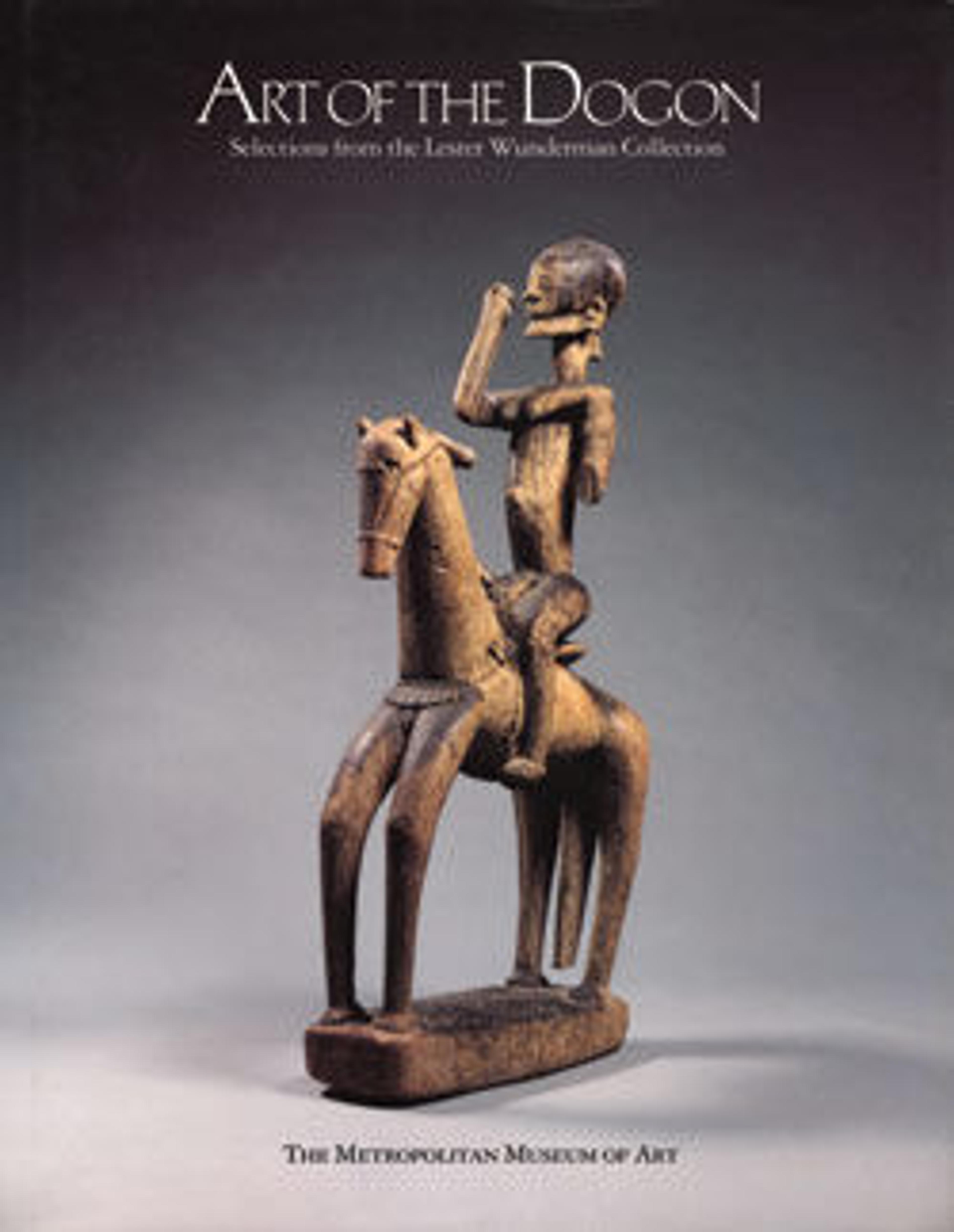Imina walu (buffalo or roan antelope face mask)
In Dogon communities, masquerade performances have played an important role in facilitating the passage of departed male members into the ancestral realm. Face masks feature prominently in public ceremonies marking baga bundo (the time of burial) and dama (the end of mourning). Dama rites are held during the hottest and driest months of the year, roughly three to four years after a burial. Elaborate and costly preparations for this ceremony include the commissioning of dozens of masks evoking figures drawn from both Dogon cosmology and daily life.
While figurative sculptures are made by professional blacksmiths, the creation of funerary masks is a more social process. In the months leading up to dama, performers work collaboratively to create their desired masks. They gather in a secluded area outside the town where the group carves, assembles, paints, and sews the various elements of their face masks and costumes. Mask makers help each other, offering advice or taking over a project with particularly complicated elements. Intricate face masks like the satimbe or omono might have required the support of a blacksmith, whereas more linear, block-cut forms like this walu were likely carved exclusively by performers.
While figurative sculptures are made by professional blacksmiths, the creation of funerary masks is a more social process. In the months leading up to dama, performers work collaboratively to create their desired masks. They gather in a secluded area outside the town where the group carves, assembles, paints, and sews the various elements of their face masks and costumes. Mask makers help each other, offering advice or taking over a project with particularly complicated elements. Intricate face masks like the satimbe or omono might have required the support of a blacksmith, whereas more linear, block-cut forms like this walu were likely carved exclusively by performers.
Artwork Details
- Title:Imina walu (buffalo or roan antelope face mask)
- Artist:Dogon artist
- Date:First half of 20th century
- Geography:Mali, Bandiagara Escarpment
- Culture:Dogon peoples
- Medium:Wood, pigment
- Dimensions:H. 20 in. × W. 9 in. × D. 9 1/2 in. (50.8 × 22.9 × 24.1 cm)
- Classification:Wood-Sculpture
- Credit Line:Gift of Lester Wunderman, 1979
- Object Number:1979.541.7
- Curatorial Department: The Michael C. Rockefeller Wing
More Artwork
Research Resources
The Met provides unparalleled resources for research and welcomes an international community of students and scholars. The Met's Open Access API is where creators and researchers can connect to the The Met collection. Open Access data and public domain images are available for unrestricted commercial and noncommercial use without permission or fee.
To request images under copyright and other restrictions, please use this Image Request form.
Feedback
We continue to research and examine historical and cultural context for objects in The Met collection. If you have comments or questions about this object record, please contact us using the form below. The Museum looks forward to receiving your comments.
